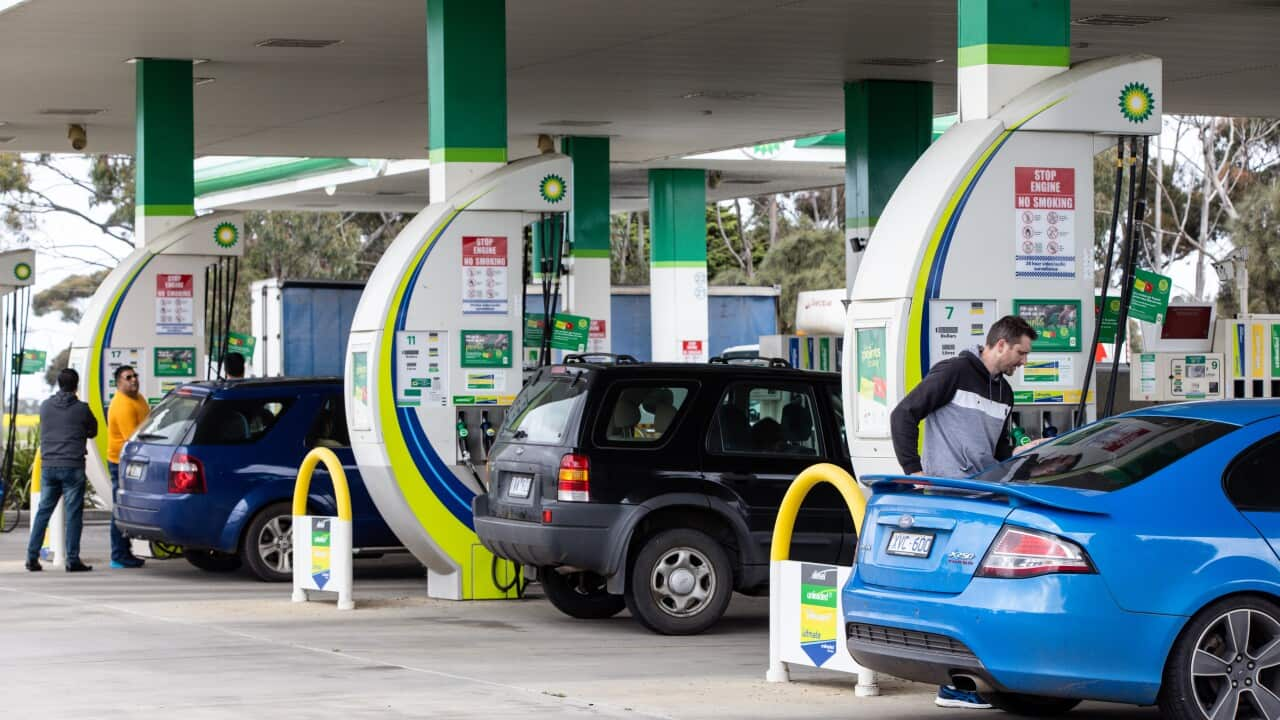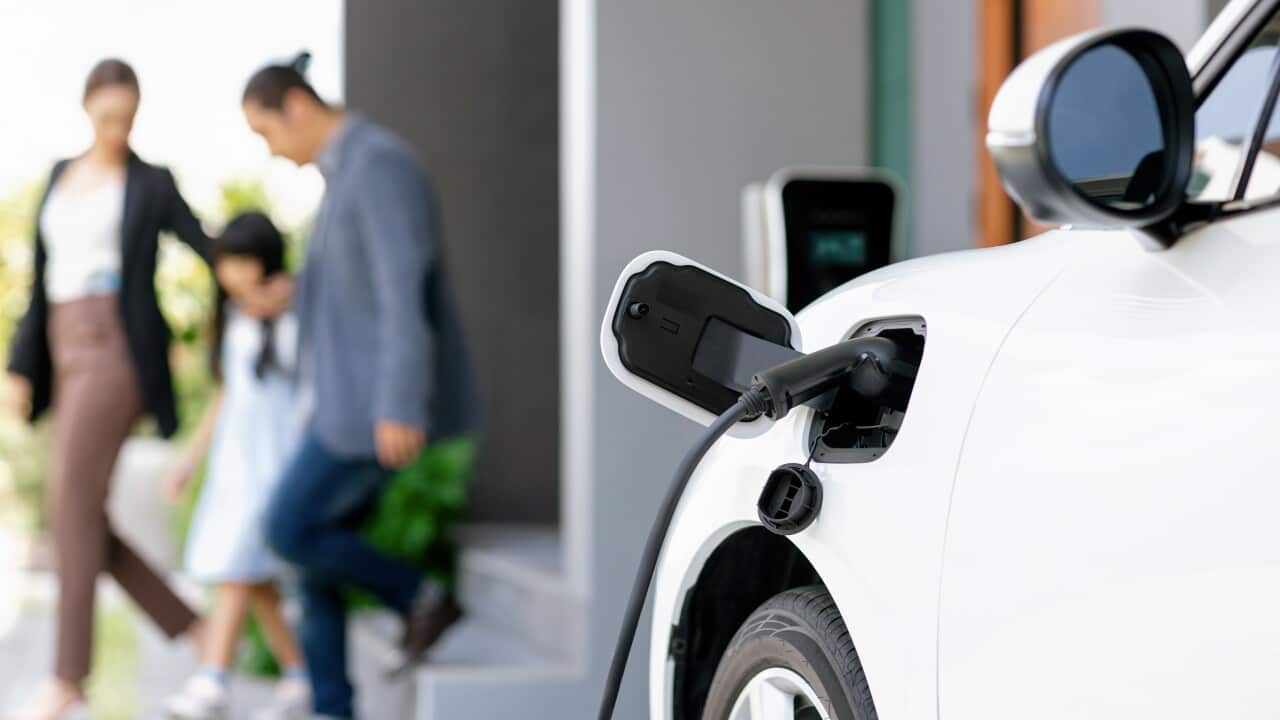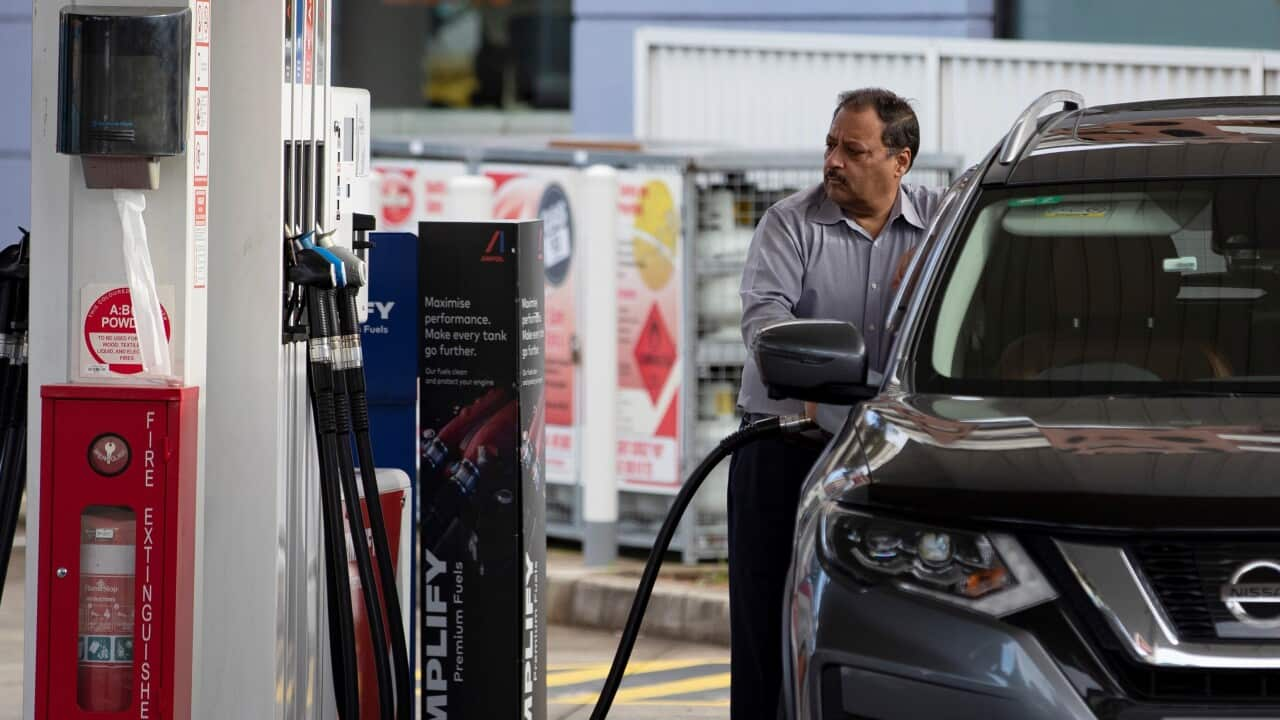Key Points
- The average national retail price for unleaded 91 is $2.06 a litre.
- Wholesale prices are the highest they've been since April and increases are being passed on to motorists.
- Global oil demand and a cut in oil supply is driving up fuel prices.
Petrol prices have jumped to the highest national average all year as global demand surges, and could stay high for some time.
The average national retail price at the bowser for unleaded 91 is $2.06 a litre, which is the highest it's been since July 2022 according to analysis from comparison site Compare the Market.
Melburnians are paying the most, at $2.16 a litre, according to the site's five-city analysis.
In Adelaide and Brisbane petrol is still under $2 a litre on average, at $1.94 and $1.97 respectively, while Perth residents are paying $2.05 and Sydneysiders $2.10.
The national average wholesale price (the price the petrol station pays) is $1.87 a litre for unleaded 91, and the last time it was in the $1.80 range was in April.
Why are petrol prices so high?
Demand for oil globally is at an all-time high and supply has weakened, according to the International Energy Agency's (IEA) Oil Market Report for August. The IEA provides policy advice to governments on the global energy sector.
"World oil demand is scaling record highs, boosted by strong summer air travel, increased oil use in power generation and surging Chinese petrochemical activity," the report reads.
Oil prices - up 23 per cent since a low in mid-June - have kept wholesale fuel prices high in Australia.
Compare the Market's fuel analyst Chris Ford said wholesale prices climbed more than 13 cents a litre in the same period, keeping retail prices "higher for longer" beyond usual fuel cycle movements.
He explains that what we pay at the bowser is affected by crude oil prices, which have risen after a July decision by OPEC+ (which groups the Organisation of the Petroleum Exporting Countries and allies led by Russia) to lower oil production, following cuts in November.
OPEC+ produces about 40 per cent of the world's crude oil, which means its output decisions have a major influence on oil prices.
"The West has made some accusations that OPEC+ has made the decision to manipulate prices, and alleged that a country like Saudi Arabia, as one of the biggest exporters would want prices to stay elevated," Ford told SBS News.
"A decrease in supply is going to affect prices, even if demand stays the same. If demand increases, then those prices go even higher," he said.
Driving petrol prices even higher is the exchange rate - oil is paid for in US dollars and a weak Australian dollar means we're all having to pay more for the same amount.
How long will petrol prices stay high?
Prices could stay high for several weeks if the Australian dollar follows expectations and weakens, Ford said.
OPEC+ tends to make decisions without too much warning, so "if they decided to cut production further and choke supply again, then we'd see a tick up in the oil prices again.
"So they could be around at least for the next couple of weeks, before we get into the discounting phase of the price cycle, but they could be around even longer."
Although oil price movements have not risen as aggressively as analysts first expected, any relief at the petrol pump is unlikely for the next few weeks, Vivek Dhar, mining and energy economist at the Commonwealth Bank, told the ABC.
The federal government's fuel excise increased from 46 cents per litre to 48 cents per litre on 1 August in line with the Consumer Price Index.
Ford said this could contribute slightly to keeping prices high for consumers.
Why is petrol more expensive at the station down the road?
Some motorists are being charged much more than the national average and prices can vary greatly between retailers in the same area.
The reasons for this are complex, Ford said, but it can depend where each city is at in its price cycle.
Retailers can set their own prices and they buy wholesale fuel at different times and prices.
"For example, if you purchase your wholesale fuel two weeks ago, or even at the end of July, you're paying 13 cents a litre less for that wholesale fuel than if you bought it today and you'll probably pass that extra cost on to customers," Ford said.
"It could be that retailer A on one side of the road, bought that and stored that fuel for a while they've got a certain caked-in margin and they're fine at a lower pump price, while retailer B bought it at a more expensive wholesale price."
Some retailers also decide to keep fuel prices consistently much lower than competitors in a bid to win more customers.
How and when to find cheaper fuel
In the meantime, Ford said motorists could keep their fuel costs down by shopping around and using comparison apps and data available in each state and territory.
"You may be able to claw back some cash by driving a few minutes up the road," he said.
He also recommended taking advantage of fuel deals through major supermarkets and other reward programs to save a few dollars on every refill.
- With additional reporting by AAP.














